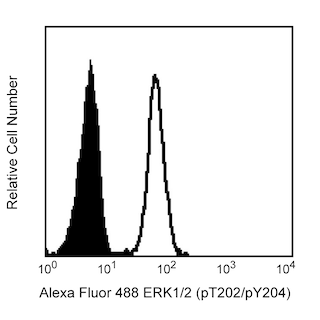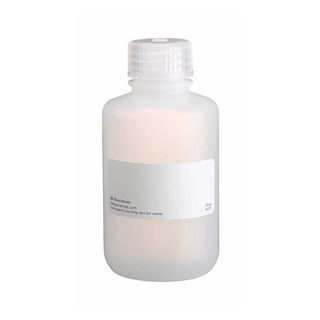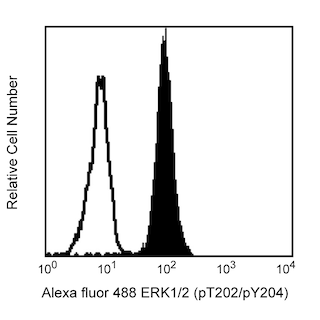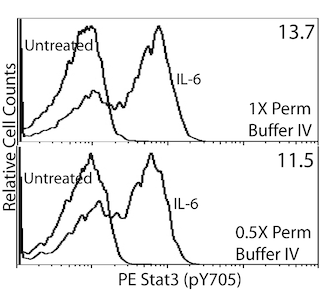-
抗体試薬
- フローサイトメトリー用試薬
-
ウェスタンブロッティング抗体試薬
- イムノアッセイ試薬
-
シングルセル試薬
- BD® AbSeq Assay | シングルセル試薬
- BD Rhapsody™ Accessory Kits | シングルセル試薬
- BD® Single-Cell Multiplexing Kit | シングルセル試薬
- BD Rhapsody™ Targeted mRNA Kits | シングルセル試薬
- BD Rhapsody™ Whole Transcriptome Analysis (WTA) Amplification Kit | シングルセル試薬
- BD® OMICS-Guard Sample Preservation Buffer
- BD Rhapsody™ ATAC-Seq Assays
- BD Rhapsody™ TCR/BCR Next Multiomic Assays
-
細胞機能評価のための試薬
-
顕微鏡・イメージング用試薬
-
細胞調製・分離試薬
-
- BD® AbSeq Assay | シングルセル試薬
- BD Rhapsody™ Accessory Kits | シングルセル試薬
- BD® Single-Cell Multiplexing Kit | シングルセル試薬
- BD Rhapsody™ Targeted mRNA Kits | シングルセル試薬
- BD Rhapsody™ Whole Transcriptome Analysis (WTA) Amplification Kit | シングルセル試薬
- BD® OMICS-Guard Sample Preservation Buffer
- BD Rhapsody™ ATAC-Seq Assays
- BD Rhapsody™ TCR/BCR Next Multiomic Assays
- Japan (Japanese)
-
Change country/language
Old Browser
Looks like you're visiting us from {countryName}.
Would you like to stay on the current country site or be switched to your country?





Analyses of MAPKAPK2 (pT334) expression. Panel 1: Western blot analysis of MAPKAPK2 (pT334) expressed by human THP-1 cells. Lysates (15 µg total cell protein/lane) from untreated (C) and PMA-treated (T) (Phorbol 12-Myristate 13-Acetate, Sigma, Cat. No. P8139; 50 nM, 15 min) THP-1 cells were blotted using Purified Mouse Anti-MAPKAPK2 (pT334) antibody (Cat. No. 562469; 0.5, 0.25, and 0.125 µg/ml for Lanes 1, 2, and 3, respectively), HRP Goat Anti-Mouse Ig (Cat. No. 554002) and a chemiluminescent detection system. Panel 2a: Western blot analysis of MAPKAPK2 (pT334) expressed by human peripheral blood mononuclear cells (PBMC). Lysates from 1 million untreated (C) and PMA-treated (T) PBMC were blotted using Purified Mouse Anti-MAPKAPK2 (pT334) antibody (2.0 µg/ml) as described above. Panel 2b: Flow Cytometric analysis of MAPKAPK2 (pT334) expressed by peripheral blood lymphocytes (PBL). Human whole blood cells were either not stimulated (dashed line histogram) or stimulated (solid line histogram) with 400 nM PMA (15 min, 37°C). Cells were fixed in 1X BD Phosflow™ Lyse/Fix Buffer (Cat. No. 558049; 10 min, 37˚C) and permeabilized in BD Phosflow™ Perm Buffer III (Cat. No. 558050) on ice (30 min). Cells were stained with BD Phosflow™ PE Mouse Anti-MAPKAPK2 (pT334) (Cat. No. 562470) antibody. Fluorescence histograms showing MAPKAPK2 (pT334) expression were generated for gated events with the forward and side-light scatter characteristics of intact lymphocytes using a BD FACSCanto™ II Flow Cytometer System. Note: MAPKAPK2 (pT334) were identified as ~49 kDa bands in the cell lysates by Western blotting.



BD Pharmingen™ Purified Mouse anti-MAPKAPK-2 (pT334)

BD Pharmingen™ Purified Mouse anti-MAPKAPK-2 (pT334)

Regulatory Statusの凡例
Any use of products other than the permitted use without the express written authorization of Becton, Dickinson and Company is strictly prohibited.
Preparation and Storage
Product Notices
- Since applications vary, each investigator should titrate the reagent to obtain optimal results.
- Please refer to www.bdbiosciences.com/us/s/resources for technical protocols.
- Caution: Sodium azide yields highly toxic hydrazoic acid under acidic conditions. Dilute azide compounds in running water before discarding to avoid accumulation of potentially explosive deposits in plumbing.
関連製品






The P24-694 monoclonal antibody specifically binds to the phosphorylated T334 site (pT334) of MAPKAPK-2. MAPKAPK-2 is a serine/threonine protein kinase. This ~49 kDa member of the MAPKAPK family of protein kinases is also known as mitogen-activated protein kinase-activated protein kinase 2. MAPKAPK-2 is phosphorylated and activated by p38 MAP kinase in response to stress, cytokines and chemokines. MAPKAPK-2 is phosphorylated on multiple sites including Thr222, Ser272 and Thr334. Phosphorylation of any two of these three amino acid residues seems to be required for the activation of this kinase that serves multiple cellular functions. Phosphorylation of Thr334 was reported to be essential for nuclear export of the heterodimer formed between p38 MAPK and MAPKAPK-2. Mice deficient in MAPKAPK-2 have been shown to be protected from ischemic injury. MAPKAPK-2 is also reported to serve as a cell cycle checkpoint kinase in response to UV irradiation. The heat shock protein, HSP27 was shown to be one of the major substrates of MAPK and MAPKAPK-2.
Development References (8)
-
Ben-Levy R, Leighton IA, Doza YN, et al. Identification of novel phosphorylation sites required for activation of MAPKAP kinase-2. EMBO J. 14(23):5920-5930. (Biology). View Reference
-
Clifton AD, Young PR, Cohen P. A comparison of the substrate specificity of MAPKAP kinase-2 and MAPKAP kinase-3 and their activation by cytokines and cellular stress. FEBS Lett. 1996; 392(3):209-214. (Biology). View Reference
-
Engel K, Kotlyarov A, Gaestel M. Leptomycin B-sensitive nuclear export ofMAPKAP kinase 2 is regulated by phosphorylation. EMBO J. 1998; 17(12):3363. (Biology). View Reference
-
Heidenreich O, Neininger A, Schratt G, et al. MAPKAP kinase 2 phosphorylates serum response factor in vitro and in vivo. J Biol Chem. 1999; 274(20):14434-14443. (Biology). View Reference
-
Krump E, Sanghera JS, Pelech SL, Furuya W, Grinstein S. Chemotactic peptideN-formyl-met-leu-phe activation of p38 mitogen-activated protein kinase (MAPK)and MAPK-activated protein kinase-2 in human neutrophils. J Biol Chem. 1997; 272(2):937. (Biology). View Reference
-
Manke IA, Nguyen A, Lim D, Stewart MQ, Elia AE, Yaffe MB. MAPKAP kinase-2 is acell cycle checkpoint kinase that regulates the G2/M transition and S phaseprogression in response to UV irradiation. Mol Cell. 2005; 17(1):37. (Biology). View Reference
-
Rouse J, Cohen P, Trigon S, et al. A novel kinase cascade triggered by stress and heat shock that stimulates MAPKAP kinase-2 and phosphorylation of the small heat shock proteins. Cell. 1994; 78(6):1027-1037. (Biology). View Reference
-
Wang X, Xu L, Wang H, Young PR, Gaestel M, Feuerstein GZ.. Mitogen-activatedprotein kinase-activated protein (MAPKAP) kinase 2 deficiency protects brain fromischemic injury in mice. J Biol Chem. 2002; 277(46):43968. (Biology). View Reference
Please refer to Support Documents for Quality Certificates
Global - Refer to manufacturer's instructions for use and related User Manuals and Technical data sheets before using this products as described
Comparisons, where applicable, are made against older BD Technology, manual methods or are general performance claims. Comparisons are not made against non-BD technologies, unless otherwise noted.
For Research Use Only. Not for use in diagnostic or therapeutic procedures.
Report a Site Issue
This form is intended to help us improve our website experience. For other support, please visit our Contact Us page.